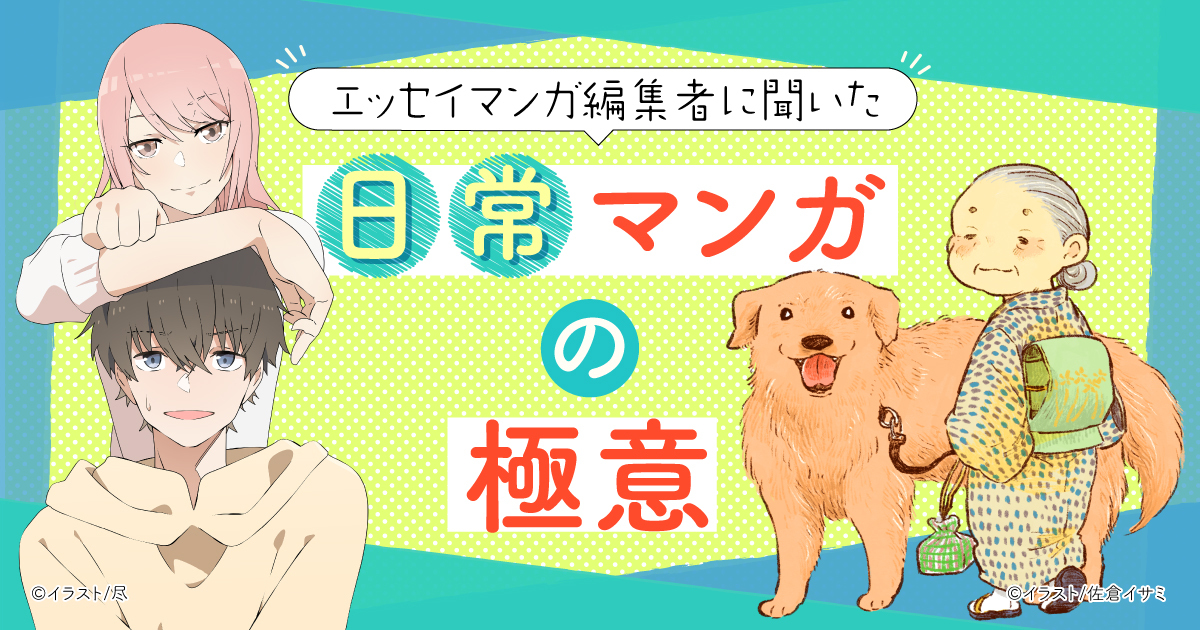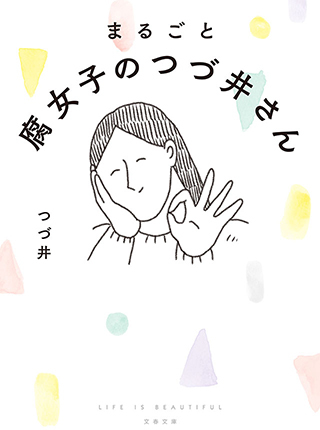「自分語り」にならないためにはどうしたらいい?「日常」マンガの 極意をエッセイマンガ編集者に聞いた

構成/原田イチボ@HEW
喜怒哀楽どれかの感情を動かしてくれるものがあってほしい
── 「とある日常マンガ賞」は、昨年に続き、今年で2回目です。前回は何作品ほど集まったのでしょうか? また、前回はフィクションとノンフィクションの割合はどれくらいでしたか?
── 副編集長の斎数さんが「とある日常マンガ賞」に期待することは何でしょうか?
── 佐藤さんは、前回の大賞作である『姫ばあちゃんとナイト』を担当していますよね。この作品の魅力は、どこにあるとお考えですか?
松本:ストーリーやキャラクターに共感できるか、というのは大事ですよね。喜怒哀楽どれかに感情を動かしてくれるものがあってほしいなぁ、と。
斎数:共感できるものがあると、自然と物語の続きが読みたくなります。「この先が見たい!」と思えるかは、選考上のポイントでもありました。
── 大賞の『姫ばあちゃんとナイト』も、入賞した『1DKメイド。』『豆知識で精神的にマウント取ってくる彼女』も、他の日常の1コマも見たいと思わせる魅力がありますね。
特別な体験は「あれば良いよね」程度
── 「『日常』がテーマであれば、なんでもOK」という形式は、自由だからおもしろい反面、自由だからこその難しさもありますよね。いくら日常といっても、たとえば私がただ「昨日はこんなご飯を食べました」というだけを描いても地味な自分語りでつまらない……。
── 「昨日はこんなご飯を食べました」の例で言うと、「実はこんな珍しいものを食べて……」と言える変わった題材が何かないか考えたくなりますが、そういうことではない?
── 特にコミックエッセイの分野だと、「自分自身に強烈な体験がないから描けない」と思っている人も多そうです。
ただの自分語りにしないためには?
── ただの自分語りではなく、他人が読んでおもしろい作品にするためには、どうすれば良いでしょうか?
── なるほど、共感性が大事。とはいえ、ただの自分語りになってしまっている作品でも、作者は「これはみんながおもしろく感じるはず!」と信じている場合がありますよね。客観的に作品を見るためには、どうすれば良いでしょうか?
初手で心を掴むために、サムネイルを工夫せよ
── 作品を選考する編集者に「この作品はおもしろそうだな」と初手で思わせるためテクニックはありますか?
人間の生活や感情が廃れることはない
── 「日常」という題材は一見地味に感じられますが、日常のおもしろさはどこにあると思いますか?
── 読者の感情を動かすものが感情であるならば、日常マンガは全然地味ではありませんね。
── ここまでお話を伺ってみて、「とある日常マンガ賞」というのは、「何を描くか」ではなく「どう描くか」を非常に重視しているコンテストであることがわかりました。
── 最後に、「とある日常マンガ賞」への応募を考えている人に向けてメッセージをお願いします。
ピクシブエッセイ「第2回とある日常マンガ賞」開催中!
2020年3月に開催された第1回コンテストでは、受賞した3作品のうち2作品がpixivコミック内にて連載、1作品が連載予定となっています。








入賞